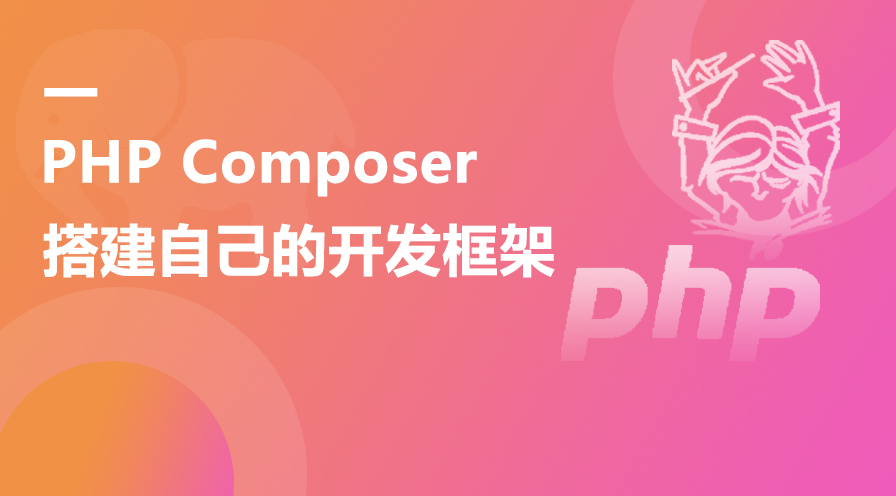Composer插件通过实现PluginInterface并监听事件扩展功能,需设置type为composer-plugin并指定extra.class。使用EventDispatcher绑定post-install-cmd等事件,在activate中访问Composer实例的服务如Config、IOInterface执行自定义逻辑,如清理缓存或发送通知。测试时可用path仓库本地调试,发布前注意错误与权限处理。

Composer 提供了强大的插件系统,允许开发者通过其内部的 Runtime API 扩展功能。编写自定义插件可以让你在 Composer 安装、更新、卸载包时执行特定逻辑,比如自动清理缓存、发送通知或集成 CI/CD 流程。
理解 Composer 插件机制
Composer 插件本质上是一个特殊的 Composer 包,它实现了 ComposerPluginPluginInterface 接口,并在激活时注册事件监听器或命令扩展。
核心组件包括:
-
PluginInterface:定义插件必须实现的 activate 和 deactivate 方法
-
IOInterface:用于与用户交互(输出信息、询问输入)
-
EventDispatcher:绑定到 Composer 生命周期事件
-
Composer 实例:访问配置、包管理器、安装器等内部服务
创建基本插件结构
从创建一个标准的 composer.json 开始:
{
"name": "your-vendor/composer-plugin-example",
"type": "composer-plugin",
"require": {
"composer-plugin-api": "^2.0",
"composer/composer": "^2.0"
},
"autoload": {
"psr-4": { "YourVendor\Plugin\": "src/" }
},
"extra": {
"class": "YourVendor\Plugin\ExamplePlugin"
}
}
关键点是 type 必须为 composer-plugin,并且 extra.class 指定主类。
接下来编写插件主类:
namespace YourVendorPlugin;
use ComposerComposer;
use ComposerIOIOInterface;
use ComposerPluginPluginInterface;
use ComposerEventDispatcherEventSubscriberInterface;
class ExamplePlugin implements PluginInterface, EventSubscriberInterface
{
public function activate(Composer $composer, IOInterface $io)
{
$eventDispatcher = $composer->getEventDispatcher();
$eventDispatcher->addSubscriber($this);
}
public static function getSubscribedEvents()
{
return [
'post-install-cmd' => 'onPostInstall',
'post-update-cmd' => 'onPostUpdate'
];
}
public function onPostInstall($event)
{
$event->getIO()->write('<info>自定义插件:安装完成!</info>');
}
public function onPostUpdate($event)
{
$event->getIO()->write('<info>自定义插件:更新完成!</info>');
}
}
使用 Runtime API 访问内部服务
在 activate 方法中,你可以通过 $composer 实例获取大量运行时信息和服务:
-
$composer->getPackage():获取当前项目的根包信息
-
$composer->getRepositoryManager():操作仓库列表
-
$composer->getInstallationManager():控制包安装行为
-
$composer->getConfig():读取配置项(如 vendor-dir)
-
$composer->getDownloadManager():自定义下载逻辑
例如,你想在 post-install-cmd 后清理由某个包生成的缓存文件:
public function onPostInstall($event)
{
$vendorDir = $event->getComposer()->getConfig()->get('vendor-dir');
$cachePath = $vendorDir . '/some/package/cache';
if (is_dir($cachePath)) {
// 删除缓存
$this->removeDirectory($cachePath);
$event->getIO()->write('缓存已清除');
}
}
本地测试与发布
将插件添加到目标项目进行测试:
{
"require-dev": {
"your-vendor/composer-plugin-example": "*"
},
"repositories": [
{ "type": "path", "url": "./local-plugin-path" }
]
}
使用 path 仓库可快速迭代调试。确认无误后可发布到 Packagist。
基本上就这些。只要理解事件机制和 Runtime API 的调用方式,就能构建出满足各种需求的 Composer 插件。不复杂但容易忽略的是权限和错误处理,在操作文件系统或网络请求时要格外小心。
以上就是Composer如何利用其内部的Runtime API编写自定义插件的详细内容,更多请关注php中文网其它相关文章!





